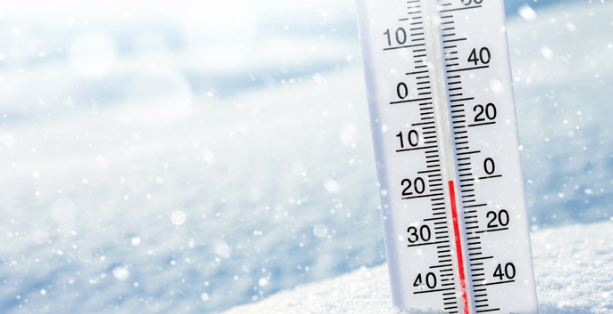Freezing temperature is a term that we often hear in weather forecasts, science classes, and even in daily life. It is a simple but very important concept because it affects our climate, food storage, water systems, and even our health. Understanding freezing temperature helps us prepare for cold weather, protect our homes, and keep our food safe.
In science, freezing temperature is the point at which a liquid turns into a solid. The most common example is water, which freezes at 32°F (0°C). However, not all liquids freeze at the same temperature. Different substances have different freezing points, which depend on their chemical makeup. This makes freezing temperature a key subject in both science and everyday living.
What Is Freezing Temperature?
Freezing temperature is the temperature at which a liquid changes its state into a solid. For water, this happens at 32 degrees Fahrenheit (0 degrees Celsius) under normal atmospheric pressure. When the temperature drops to this level, the molecules of water slow down, stick together, and form solid ice.
The process is also known as the freezing point. While water is the most familiar example, other liquids like alcohol, oil, and mercury each have their own freezing temperatures. For instance, alcohol freezes at a much lower temperature, which is why it is often used in thermometers and antifreeze solutions
Why Is Freezing Temperature Important?
Freezing temperature is not just a scientific term. It affects our lives in many ways:
- Weather and Climate – When air temperatures reach the freezing point, snow, sleet, and ice form. This impacts transportation, farming, and daily life.
- Food Storage – Freezing food stops bacteria from growing, which keeps food safe for a longer time.
- Health and Safety – Exposure to freezing temperatures can cause frostbite or hypothermia in humans.
- Engineering and Infrastructure – Roads, buildings, and water systems can be damaged when water freezes and expands.
How Water Freezes
Water has a special property compared to many other liquids. Most liquids shrink as they get colder, but water expands when it freezes. This is why ice floats on water and why frozen pipes burst in winter.
The freezing process happens in stages:
- Cooling down: As water loses heat, its molecules move more slowly.
- Nucleation: Small clusters of molecules form the starting points of ice crystals.
- Crystal Growth: These ice crystals grow and spread until the entire liquid turns solid.
Factors That Affect Freezing Temperature
The freezing temperature of water can change under certain conditions:
- Pressure – Higher pressure can slightly lower the freezing point.
- Impurities – Adding salt or sugar lowers the freezing temperature, a process called freezing point depression. This is why salt is used to melt ice on roads.
- Supercooling – Water can remain liquid even below its freezing point if there are no impurities to start the freezing process.
Freezing Temperature and Weather
When the air temperature falls to 32°F (0°C) or below, meteorologists say it has reached freezing. This is important because it affects:
- Frost: Forms on plants and surfaces, which can damage crops.
- Snow and Ice: Develop when precipitation occurs at or below freezing.
- Freezing Rain: Rain that turns into ice upon hitting a cold surface.
Farmers, drivers, and homeowners pay close attention to freezing temperatures to protect crops, vehicles, and water pipes.
Freezing in Food Preservation
One of the most useful applications of freezing temperature is in food storage. Freezing food slows down the growth of bacteria and mold. This is why frozen vegetables, meats, and ready-to-eat meals can last for months in a freezer.
Key points about food freezing:
- Water in food turns into ice crystals, which preserve the food’s structure.
- Different foods freeze at slightly different temperatures.
- Freezers are typically kept at 0°F (-18°C) to ensure food safety.
Dangers of Freezing Temperature to Humans
While cold weather is part of nature, freezing temperatures can be harmful. Some risks include:
- Frostbite – When skin tissues freeze, causing damage to cells.
- Hypothermia – A dangerous drop in body temperature when exposed to cold for too long.
- Slippery Surfaces – Ice on roads and sidewalks increases the chance of accidents.
To stay safe, it is important to wear warm clothing, limit time outdoors, and use salt or sand on icy surfaces.
Freezing and Technology
Technology uses the concept of freezing temperature in many ways:
- Cryogenics – Extremely low temperatures are used for scientific research.
- Medicine – Freezing is used to preserve organs, blood, and vaccines.
- Transportation – Antifreeze fluids prevent car engines from freezing.
This shows how freezing temperature is not just a natural phenomenon but also a tool for progress.
Interesting Facts About Freezing Temperature
- Ice is less dense than water, which is why it floats.
- Freshwater freezes at 32°F (0°C), but seawater freezes at around 28°F (-2°C) because of salt.
- Some animals, like frogs and fish, can survive in freezing conditions by producing natural antifreeze in their bodies.
- The coldest temperature ever recorded on Earth was -128.6°F (-89.2°C) in Antarctica.
Conclusion
Freezing temperature is a simple concept with wide-reaching effects. It is the point where liquids, especially water, turn into solids. This process impacts weather, food storage, human health, and even technology. Knowing how freezing temperature works helps us prepare for winter, protect our homes, and use science in everyday life. From the snow outside your window to the food in your freezer, freezing temperature plays a role everywhere.
FAQs
Q1: What is the freezing temperature of water?
The freezing temperature of water is 32°F (0°C) at normal pressure.
Q2: Can water freeze below 32°F?
Yes. Pure water can supercool and remain liquid below 32°F until ice crystals start forming.
Q3: Why does salt lower the freezing point of water?
Salt disrupts the bonding of water molecules, which lowers the freezing temperature. That’s why it is used to melt ice on roads.

